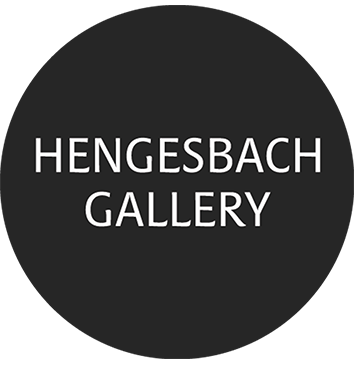WILLIAM EGGLESTON
Troubled Waters
April 28 – July 19, 2012
William Eggleston (*1939 in Memphis, Tennessee) gilt als einer der wichtigsten US-amerikanischen Fotografen. Er ist vor allem für seinen revolutionären Einsatz der Farbe, aber auch für seine ungewöhnlichen Bildkompositionen bekannt. Seine erste Einzelausstellung – es war die erste mit Farbfotografien in der Museumsgeschichte – richtete ihm 1976 das Museum of Modern Art, New York, aus. Der bedeutende Kunsthistoriker und damaliger Direktor der Fotoabteilung des MoMA John Szarkowski erkannte die bahnbrechende Bedeutung des Werkes, handelte sich jedoch mit der Ausstellung nicht wenige Feindseligkeiten ein – von Presse und Publikum scharf kritisiert, wählte sie der New-York-Times-Kritiker Gene Thornton in einer Revue gar zur „most hated show of the year“.
William Eggleston polarisierte – noch zu Anfang der 70er Jahre galt der Einsatz der Farbe in der künstlerischen Fotografie als vulgär (vgl. Interview mit Walker Evans, Image Magazine, Vol. 17., No.4, 1974). Doch nicht allein die Farbigkeit bot Anstoß, erschwerend hinzu kam Egglestons befremdliche Inszenierung des Alltäglichen: Die ungewöhnlichen Bildkompositionen wurden als Schnappschüsse gänzlich unwürdiger Bildmotive missverstanden – „perfectly banal“, konstatierte der Journalist Hilton Kramer. Statt sich an einer frontalen und linearen Komposition zu orientieren (Walker Evans), interessierte sich Eggleston, wie viele seiner New Yorker Kollegen derzeit (Diane Arbus, Garry Winogrand, Lee Friedländer u. a.), stärker für den asymmetrischen Bildaufbau. Eggleston hierarchisiert die Farbe somit nicht, er dissoziiert sie. Die Beunruhigung, die von seinen Bildern ausgeht, ist der Auflösung einer Bildordnung geschuldet und birgt etwas Anarchisches in sich: „I am at war with the obvious“ (William Eggleston im Interview mit Mark Holborn, Nachwort „The Democratic Forest“). Die psychologisierende Behandlung der Farbe wurde wegweisend für das Werk zahlreicher Künstler, allen voran David Lynch und Juergen Teller.
Hengesbach Gallery zeigt seine Serie „Troubled Waters“, die Anfang der 70er Jahre entstand und exemplarisch für Egglestons Auseinandersetzung mit dem Süden der USA steht. Schon der Titel der Werkserie rekurriert auf die kulturellen Wurzeln des Mississippi – die Songtexte der Blueslegende Muddy Waters wie „I be’s trouble“ oder „Trouble no more“ bringen die Südstaaten-Melancholie programmatisch zum Ausdruck: Die Arbeiten der Serie „Troubled Waters“ oder ’schwere Fahrwasser‘ symbolisieren ein nicht greifbares und dennoch virulentes amerikanisches Trauma.
William Eggleston (*1939 in Memphis, Tennessee) is considered one of the most important US-American photographers. He is primarily known for his revolutionary application of colour, but also for the unusual composition of his pictures. His first solo exhibition – it was the first with coloured photographs in museum history – was organized for him in 1976 by the Museum of Modern Art, New York. The eminent art historian and director of the MoMA’s department of photography at that time, John Szarkowski, recognized the groundbreaking importance of the work, but found himself at the receiving end of a lot of animosities with the exhibition – which was sharply criticized by the press and public -, and even voted “most hated show of the year“ in a review by New York Times critic, Gene Thornton.
William Eggleston polarized – in the early 70s, the application of colour in art photography still counted as vulgar (cf. interview with Walker Evans, Image Magazine, Vol. 17., No.4, 1974). But not only the chromaticity gave cause for offence; – to make matters worse, Eggleston’s staging of everyday life was strange: the unusual pictorial compositions were misunderstood as snapshots of entirely unworthy pictorial motifs – „perfectly banal“, Hilton Kramer, the journalist, stated. Instead of orientating himself towards a frontal and linear composition (Walker Evans), Eggleston had, like many of his New York colleagues of the time (Diane Arbus, Garry Winogrand, Lee Friedländer, among others), a much stronger interest in asymmetrical composition. Eggleston does not apply a hierarchy to colour, he dissociates it. The disconcertment that emanates from his pictures goes back to the dissolution of a composition and is inherently something anarchistic: „I am at war with the obvious“ (William Eggleston in an interview with Mark Holborn, epilogue „The Democratic Forest“). The psychological aspect in the treatment of colour pointed the way for the work of numerous artists, with David Lynch and Juergen Teller leading the field.
Hengesbach Gallery shows his series „Troubled Waters“ that developed in the early 70s and is exemplary of Eggleston’s concerns about the South of the USA. The title of the group of works already draws on the cultural roots of the Mississippi – the song texts by blues legend Muddy Waters like „I be’s trouble“ or „Trouble no more“ express the melancholy of the Southern States, a familiar agenda: The works of the series „Troubled Waters“ or ‚choppy channel‘ symbolize an intangible yet virulent American trauma.
Installation Views
Installationviews Hengesbach Gallery, 2012
